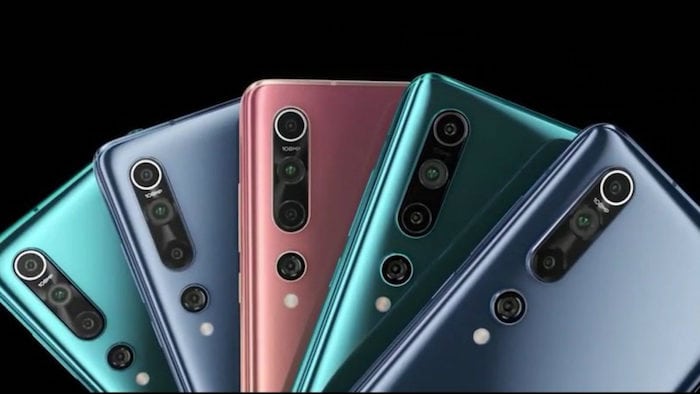The Galaxy S20 starts at $999, whereas the Mi 10 starts at a remarkable price of just $580 (approx). Although the two devices differ largely over their pricing, they surely go head-to-head with the specs and the features. So, let’s jump in and have a detailed comparison between the two.
Samsung Galaxy S20 vs Xiaomi Mi 10
Design and Display
In terms of design, both the S20 and the Mi 10 feature an all-glass design with a glass back, except that the one on the Mi 10 is slightly curved to offer a better grip in hand. Moving to the front, the two can be seen to vary to a large extent.
The Galaxy S20 flaunts a 6.2-inch Dynamic AMOLED display with a hole-punch cutout to house the front-facing camera. It offers a 3200 x 1440 pixels screen resolution with a 20:9 aspect ratio and a 120Hz refresh rate. [Note: the 120Hz refresh rate on the S20 is limited to 1080p resolution, and not 1440p resolution] On the other hand, the Mi 10 features a bigger 6.67-inch curved OLED display with a hole-punch cutout on the top-left to house the selfie camera, similar to the S20. The display offers a 2340 × 1080 pixels screen resolution with a 19.5:9 aspect ratio and a 90Hz refresh rate and 180Hz touch response rate.
Performance
Talking about performance, both Galaxy S20 and Mi 10 both offer incredible specs on paper and promise to offer an impressive experience. With the Galaxy S20, Samsung is using either a Snapdragon 865 or an Exynos 990 processor (depending on the regions). It comes with 8GB / 12GB of LPDDR5 RAM and 128GB of UFS 3.0 storage (expandable up to 1TB with microSD card). To power the device, there is a 4000mAh battery with 25W fast charging, wireless charging support, and reverse power-sharing support. On the other hand, the Mi 10 also uses the same Snapdragon 865 octa-core processor with Adreno 650 GPU and X55 5G modem, paired with 8GB / 12GB of LPDDR5 RAM and 128GB / 256GB of UFS 3.0 storage (no expandable storage). It includes a bigger 4780mAh battery with faster 30W fast charging, wireless charging support, and 10W reverse power-sharing. On the software front, the Galaxy S20 runs on Android 10 with Samsung’s OneUI 2.0 on top, whereas, the Mi 10 comes with MIUI 11 based on Android 10, out of the box.
Camera
In the camera department, the Galaxy S20 and the Mi 10 sport a triple and a quad-camera setup on the rear with an LED flash, respectively. The setup on the Galaxy S20 includes a 12MP primary sensor with f/2.2 aperture, a 64MP telephoto sensor with f/2.0 aperture, and a 12MP ultra-wide sensor with f/1.8 aperture.
Whereas, the Mi 10 trumps it (at least on paper), with a setup that includes a 108MP primary sensor with f/1.69 aperture, a 13MP ultra-wide-angle sensor with f/2.4 aperture, a 2MP macro sensor with f/2.4 aperture, and a 2MP depth sensor with f/2.4 aperture. On the front, the Galaxy S20 sports a 10MP front-facing camera with an f/2.2 aperture, while the Mi 10 has a 20MP camera with an f/2.0 aperture. Both devices have the front-facing camera housed in the hole-punch cutout on the front.
Miscellaneous
The Galaxy S20 and the Mi 10 come with 5G connectivity, with both supporting SA/NSA dual-mode 5G and dual 4G VoLTE. Similarly, the devices come with Wi-Fi 6, Bluetooth 5, NFC, and USB Type-C. As for other specifications, the S20 comes with IP68 water resistance and Dolby Atmos Stereo Speakers by AKG, whereas, the Mi 10 features stereo speakers and Hi-Res audio. For authentication, both come with an in-display fingerprint scanner and facial unlock to keep your device protected.
Pricing
When it comes to pricing, the Samsung Galaxy S20 starts at $999 for the base variant, whereas, the Mi 10 with base configuration starts at ¥3999 (~ $572) and goes up to ¥4699 (~ $672). Stay tuned for another comparison between the Samsung Galaxy S20 Plus and Mi 10 Pro.







